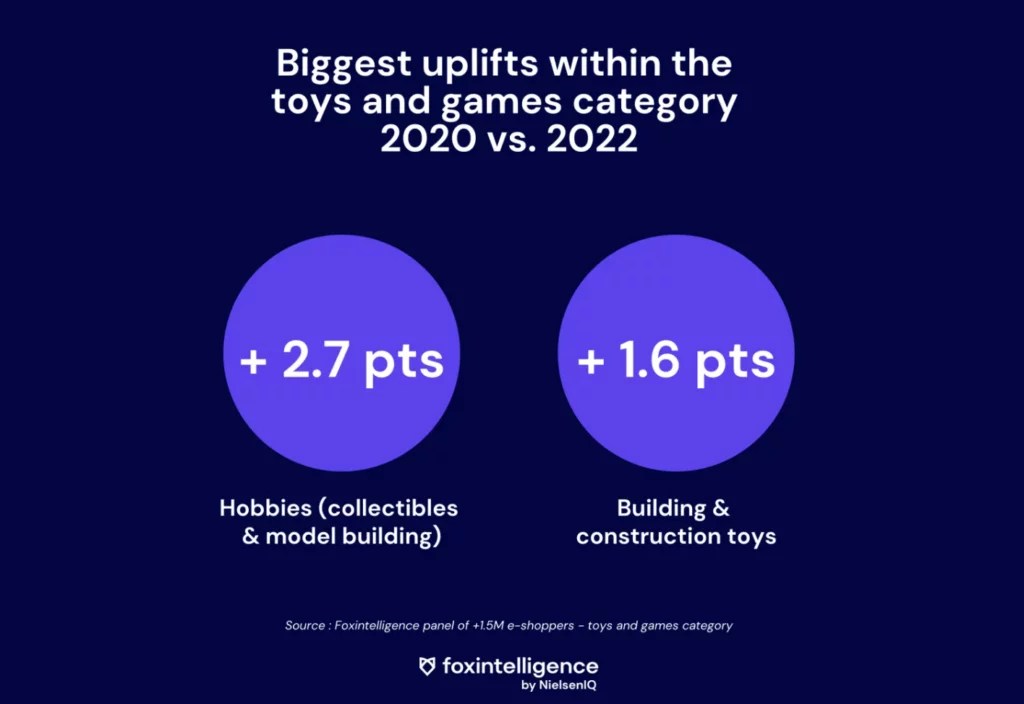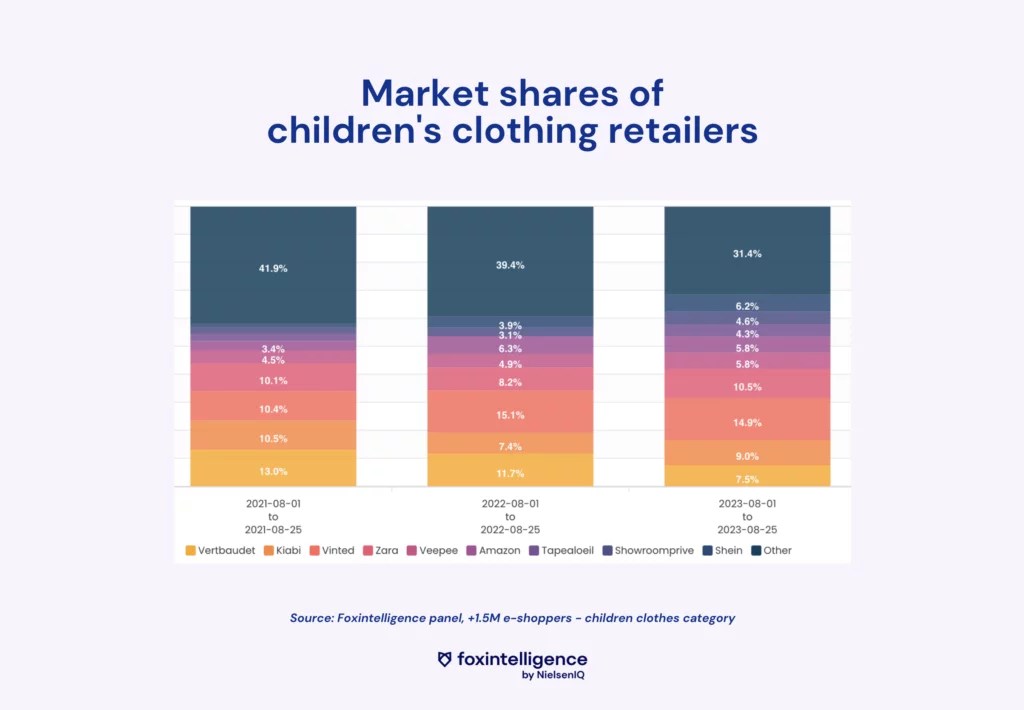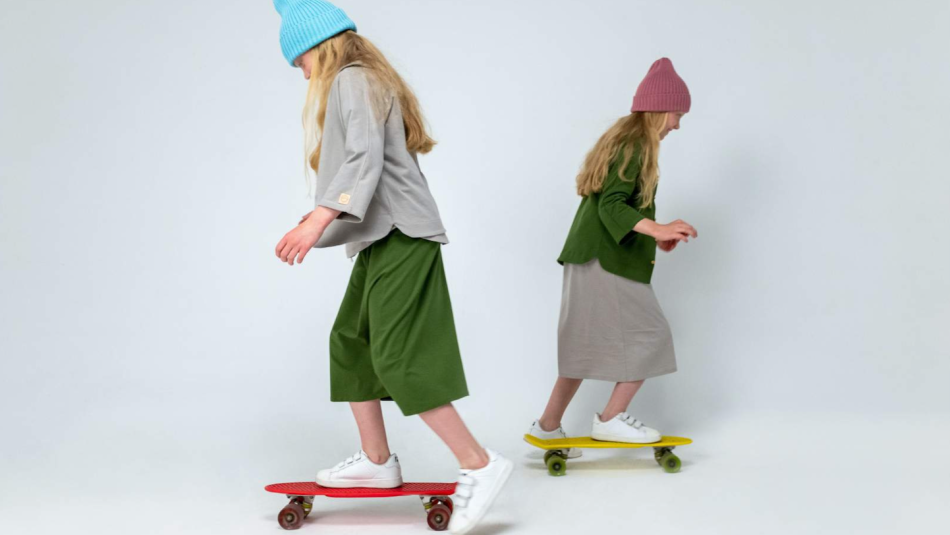Children’s Ready-to-Wear Market Analysis
The children’s ready-to-wear market has several unique aspects. It is constantly in motion and heavily influenced by sales seasonality. Let’s see how the children’s fashion market is evolving, the annual highlights in this sector, and the strategies adopted by various players to gain market share.
Evolution of market shares in clothing sales
The health crisis has permanently altered consumption habits in France, favoring planned purchases over impulsive ones.
Between 2019 and 2022, the clothing market saw a decrease of nearly 2 percentage points for the women’s category and 0.6 points for the men’s category. In contrast, the children’s category is the only one that recorded an increase: +0.2 points over these three years.
Children’s Clothing and Second Hand
For economic or ecological reasons, the choice of second-hand clothing is a natural one when it comes to children’s clothing: they grow quickly, and their clothes are worn for only a short time. Buying second-hand aligns with the need for frequent product renewal.
Brands have seized the opportunity:
- Petit Bateau offers second-hand products directly on its website, as well as a clothing rental service. This format aligns with the market typology since children’s clothing is often worn for only a few months.
- Vertbaudet launched (re)Vertbaudet, its own second-hand platform, and the brand has also entered the marketplace, where it offers complementary products to its range.
Seasonal Sales Trends
The back-to-school season is the time of year when children’s clothing sales take off: it’s the peak of the year, both in physical stores and e-commerce.
How do retailers respond? They offer “Back-to-School Special Collections.” On some websites, there are even filters like “Preschool Back-to-School” and “Elementary School Back-to-School.”
➡️ Read the full article on the children’s fashion market.
Study of the Toy and Game Market
Between trade-offs and pleasure purchases, the toy and game industry managed to stabilize in 2022.
Children’s games and toys are designed to stimulate their cognitive, social, and physical development, making them a highly sought-after product category for parents. At the same time, trends in this sector are constantly evolving, with innovations that capture attention.
The weight of the toy and game category in e-commerce remained stable between 2021 and 2022, accounting for 2.5% of sales.
Collectible toys and model kits saw the biggest uplift in the last three years. Construction toys also performed well, with a sales increase of +1.6 points in 2 years.
Between increased time spent at home and the need for entertainment, the toy and game category benefited from the health crisis.
Christmas Season Drives Sales
It’s a key moment for the category, during which sales skyrocket. In 2022, the period from November to December represented 38% of the year’s online sales value in the category.
Kidults: A Target to Nurture
Kidults are adults who continue to be interested in – and purchase – games originally designed for children. This is an especially interesting target, particularly due to their purchasing power.
Toy manufacturers (like Lego) capitalize on nostalgia and the passion of this audience, creating new growth opportunities in the market.
➡️ Read the full article on the toys and games market.

Back-to-School Boosts Online Sales of Children’s Products
Backpack and Bag Sales: The Podium
Amazon holds 27.1% of market share in August. Cabaia is in second place, and Vinted is in third position, with an average backpack price of €23 – compared to €60 for Eastpak.
While Eastpak is not on the podium, it still comes in fourth place with 7.9% market share – and remains the most popular backpack brand.
Vinted Claims 15% of Market Share in Children’s Clothing Sales
Children’s clothing sales saw a slight increase in August compared to July (1.6 points), but they remained relatively stable compared to the previous year, with a 0.2% increase.
Market shares have declined for traditional retailers but have benefited Vinted, which gained 5% market share in 2 years.
➡️ Read the full article on back-to-school best sellers

Key insights
- Eastpak remains the favorite brand in the backpack/school bag sector, with over a quarter of market share (26.2%) for August sales.
- Kidults are the new target audience for players in the toy and game category.
- Historical players in the toy sector are venturing into in-store sales of used toys.




